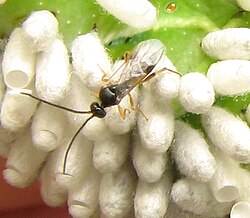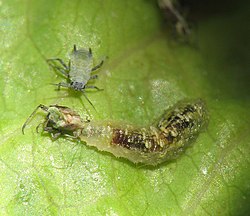1) method of managing plant pests or weeds through the use of natural predators. parasites. or pathogens. 2) biological methods management of vegetation by establishment and conservation of compatible. stable plant communities using plant competition. allelopathy. animals. insects. or pathogens. Cover-type conversion is a type of biological control.
Biological control or biocontrol is a method of controlling pests, whether pest animals such as insects and mites, weeds, or pathogens affecting animals or plants by using other organisms. It relies on predation, parasitism, herbivory, or other natural mechanisms, but typically also involves an active human management role. It can be an important component of integrated pest management (IPM) programs.

There are three basic strategies for biological control: classical (importation), where a natural enemy of a pest is introduced in the hope of achieving control; inductive (augmentation), in which a large population of natural enemies are administered for quick pest control; and inoculative (conservation), in which measures are taken to maintain natural enemies through regular reestablishment.
Natural enemies of insects play an important part in limiting the densities of potential pests. Biological control agents such as these include predators, parasitoids, pathogens, and competitors. Biological control agents of plant diseases are most often referred to as antagonists. Biological control agents of weeds include seed predators, herbivores, and plant pathogens.
Biological control can have side-effects on biodiversity through attacks on non-target species by any of the above mechanisms, especially when a species is introduced without a thorough understanding of the possible consequences.

